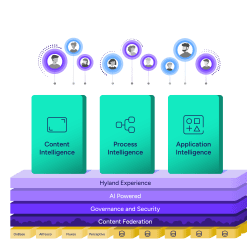Why choose Hyland?
Thousands of organizations around the globe choose Hyland to support their digital transformations and modernize the way they work.
Our modern, open and cloud-native platforms mean you can build strong connections, keep evolving and remain resilient and agile in an ever-changing world.














